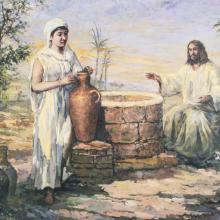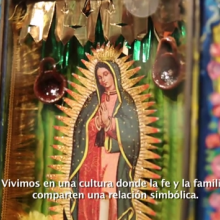latina
PRIMARILY SET IN 1930s Denver, Kali Fajardo-Anstine’s debut novel, Woman of Light, is a deeply immersive story about the survival and legacy of an Indigenous Chicano family. When a violent mob attacks him for having a relationship with a white woman, Diego Lopez flees the city, leaving his younger sister, Luz Lopez, with their aunt Maria Josie. But working as a laundress isn’t enough to keep a roof over their heads, so Luz gets a job as a typist for a local Greek lawyer. When a cop kills a Mexican factory worker, Luz’s boss David takes on the case, and Luz is exposed to the inner workings of an unjust system.
Epic in scope, the novel covers five generations. While we focus mainly on Luz and Diego’s timeline in the 1930s, we also get brief glimpses of the people who came before them. There is Desiderya Lopez, the Sleepy Prophet of Pardona Pueblo, who finds an abandoned newborn and raises him as her own. This child is Pidre Lopez, who later departs Pardona after Desiderya’s death. In the town of Animas, Pidre falls in love with the widow and sharpshooter Simodecea Salazar-Smith when he recruits her for his performing theater. Together, they run the vibrant business and raise their daughters Sara and Maria Josie until tragedy strikes with the arrival of white prospectors.
“We don’t think the death penalty is in line with Christian values,” said Cameron Vickrey, a staff member with Fellowship Southwest, a network of churches dedicated to social service. While she has always opposed the death penalty on compassionate grounds, Vickrey said Lucio’s case caught her attention because of new evidence demonstrating the likelihood that Lucio is innocent.
AS A LATINA, I waited with eager anticipation for the publication of Robert Chao Romero’s Brown Church: Five Centuries of Latina/o Social Justice, Theology, and Identity . As a historian, Romero is the best person to take us through the history of the Latin American church, and he tells it truly, not wishing to shield the reader from the horrors of colonization. He begins with the exploitation and conversion “by the sword” that began under the rule of the Spanish conquistadores, who brought to the Americas their Roman Catholic faith—along with their hunger for gold and other resources. Early Catholic missionaries such as Friar Antonio de Montesinos and Bartolomé de las Casas sought to divorce the faith from the Spanish colonial project and condemned the latter with courage and fervor.
It is worthwhile to note that Romero brings his readers all the way to the present, introducing them to living Latinx theologians and their work. For many readers, his chapter on “Recent Social Justice Theologies of U.S. Latinas/os” will be a great resource for delving deeper into the works of living Latinx scholars and practical theologians. While the book heavily features male scholars and theologians, it was heartening to see this section highlight Mujerista theology and the work of Latinas doing theology—women such as Elizabeth Conde-Frazier, Sandra Maria Van Opstal, Noemi Vega Quiñones, and Zaida Maldonado Pérez.
Sandra Cisneros and Erika Sanchez express joy when dicussing the messiness of being human.
The Rev. Peter Morales, the first Latino president of the liberal and theologically diverse association, resigned effective on April 1, as criticism mounted over hiring practices.
“It is clear to me that I am not the right person to lead our Association as we work together to create the processes and structures that will address our shortcomings and build the diverse staff we all want,” he wrote in his March 30 resignation letter to the UUA’s trustee board.

Image via Freedom Studio/Shutterstock.com
I continue to be surprised and disappointed by ubiquitous interpretations of [the Samaritan woman] as a “whore” or “prostitute.” John is using symbolism — the woman represents Samaria, which, according to Jewish reckoning, worshipped the five foreign gods. Samaria was seen as being partially faithful to the covenant (“the one you have now is not your husband”). John depicts Jesus as the bridegroom. When the Samaritan woman joins Jesus, the symbolized, divided but related ethnic groups will stop fighting …”
As a boy growing up, Joanna Maria Cifredo wasn’t like her brothers.
“My brothers looked at females because they wanted to be with a female,” Cifrado says, in new video resource by the Human Rights Campaign that premiered Oct. 1. “I looked at females more like, ‘Oh, I wish I was her.’ ”
Now, Joanna has decided to physically identify as a woman full time.
Her voice joined many others in Before God: We are All Family, a new film focused on the experiences of Latina LGBT people. She also participated, along with her mother Maria Vega-Cifredo, in a discussion panel that included the filmmaker at the first public viewing of the resource at the GALA Hispanic Theater in Washington, D.C.
Focusing on the important role family and faith play in Latino communities, the video resource is the newest component to a bilingual discussion guide produced by the HRC and the National Latina/o LGBT Human Rights Organization, among others. The organizations developed the guide with the aim of helping Latinos have a conversation about faith and LGBT inclusion.
The guide, written by Rev. Dr. Miguel A. de la Torre, with help from Rev. Dr. Ignacio Castuera and Lisbeth Melendéz Rivera, gathers 14 testimonies into six chapters, each with stories, questions, and exercises focused on what it means to be LGBT and Latina. Inside the guide, created in 2011, are sections on family, the gift of our bodies, the Bible, and solidarity.
Ada María Isasi-Díaz often quipped that she “was born a feminist on Thanksgiving weekend in 1975,” when she attended the first Women’s Ordination Conference in Detroit. At the time of her unexpected death in May at age 69, after fighting an aggressive cancer, she was acknowledged as the full-fledged mother of mujerista theology and recognized around the world for her critical contribution in shaping a feminist liberation theology for Latinas in the United States.
Ada was “a pioneer,” Catholic theologian Rosemary Radford Ruether told Sojourners. “She gave us a vision of justice and integrity for Latina women in the U.S. and the world that was inspiring”; her work is “an integral part of feminist theological thought.”
Ada María Isasi-Díaz was born in Cuba in 1943, the third of six sisters and two brothers. Her father worked in the sugar cane mills, and her mother nourished in Ada a love of Catholic religious practices and the importance of staying in the struggle (la lucha) for what one believes. Her family fled Cuba after years of civil war, and in 1960, at age 17, Ada arrived in the U.S. as a political refugee. Soon she joined the Ursuline sisters and, in 1967, was sent to Lima, Peru, as a missionary.
“I lived there for three years,” Ada wrote. “This experience marked me for life ... It was there that the poor taught me the gospel message of justice. It was there that I learned to respect and admire the religious understandings and practices of the poor and the oppressed and the importance of their everyday struggles, of lo cotidiano.”

Cereal image via Wylio http://www.wylio.com/credits/Flickr/5399595876
She bit her bottom lip first, then lifted her gaze to my unassuming face. When she started looking at me softly, like I was some sort of oft-beaten puppy, I knew what was coming.
“I’m so sorry,” she whispered, “but your card’s been declined.” I offered a solution.
“Huh. Want to try it again?” Unsurprisingly, nothing changed, save her face, which only contorted more.
“Weird,” I said. The steam tauntingly danced on my cheeks. “Let me go check with my bank and figure it out.” I walked to a table, leaving the coffee, and pulled out my computer. After entering my username and password, my statement appeared on the screen.
“Available Balance: -$10.41,” it read.
Last month, an encounter between Michelle Obama and a Latina child in a suburban Maryland school brought into sharp relief one of the most pressing issues surrounding U.S.
Sonia Sotomayor was confirmed more than one month ago, so why, you may ask, am I just now penning a blog about her historic appointment to the U.S. Supreme Court? The answer is easy -- I was scared. I was scared of offending members of the SMA community because of Justice Sotomayor's position on various hot-button issues.
Are we living in the golden age of racial debates? Every week seems to bring some new wrinkle in the national conversation about race, class, and ethnicity. And with the emergence of social media, we can now engage in these conversations with ever-greater frequency and intensity.





